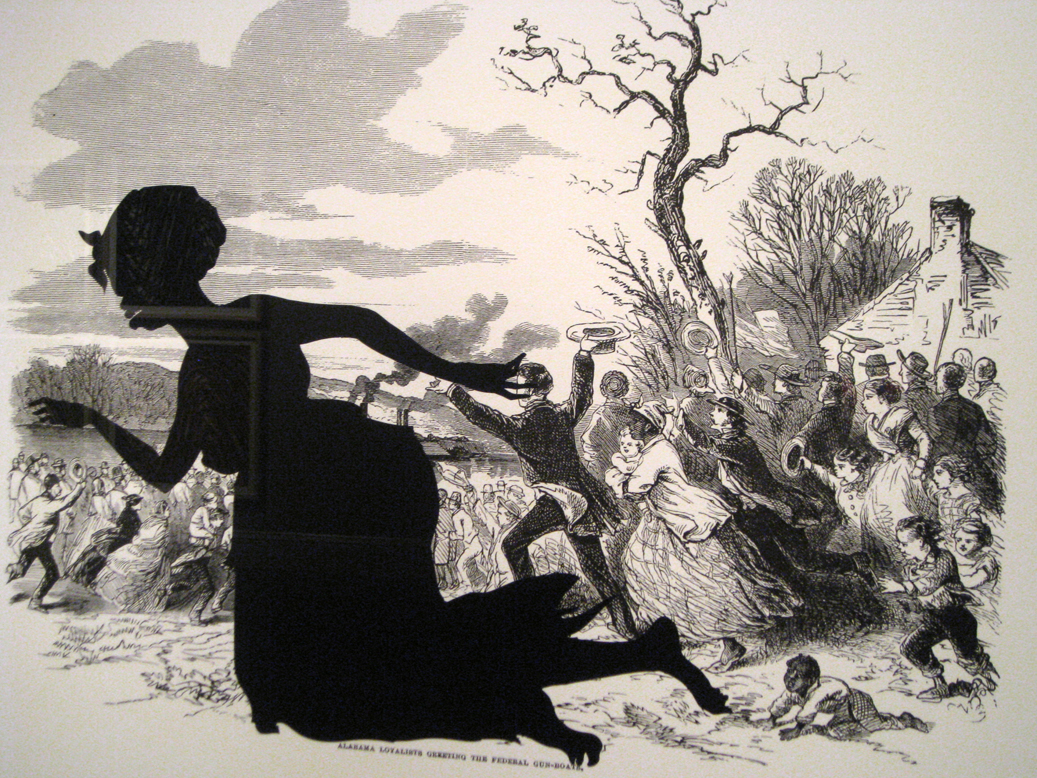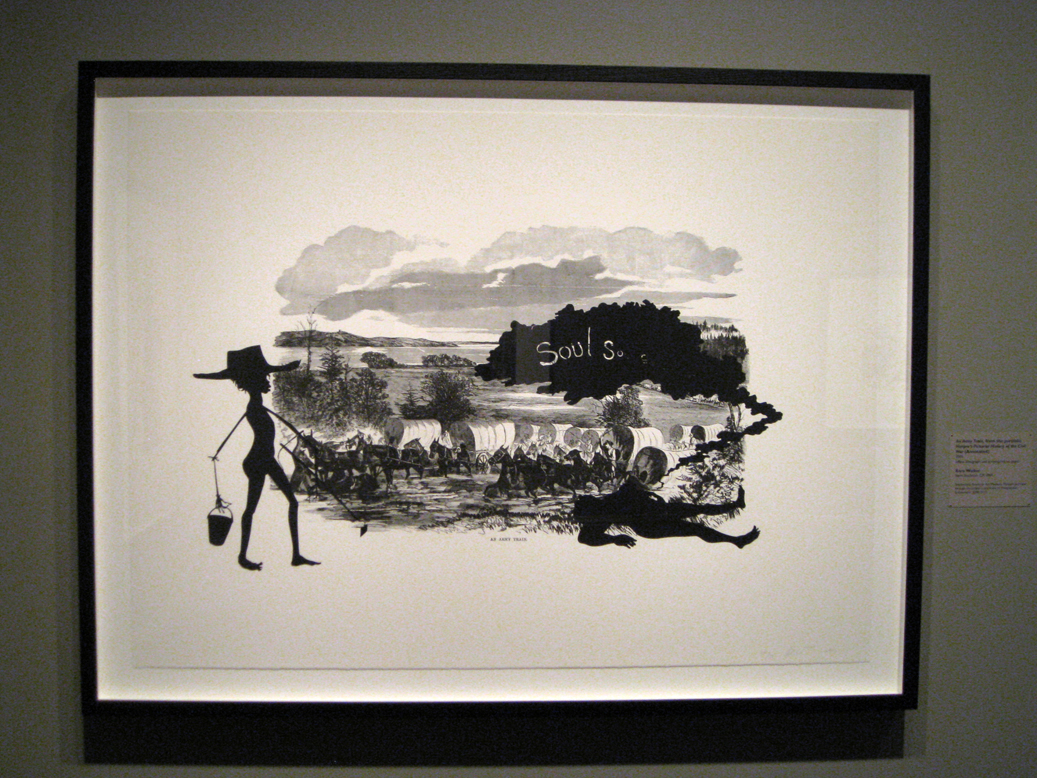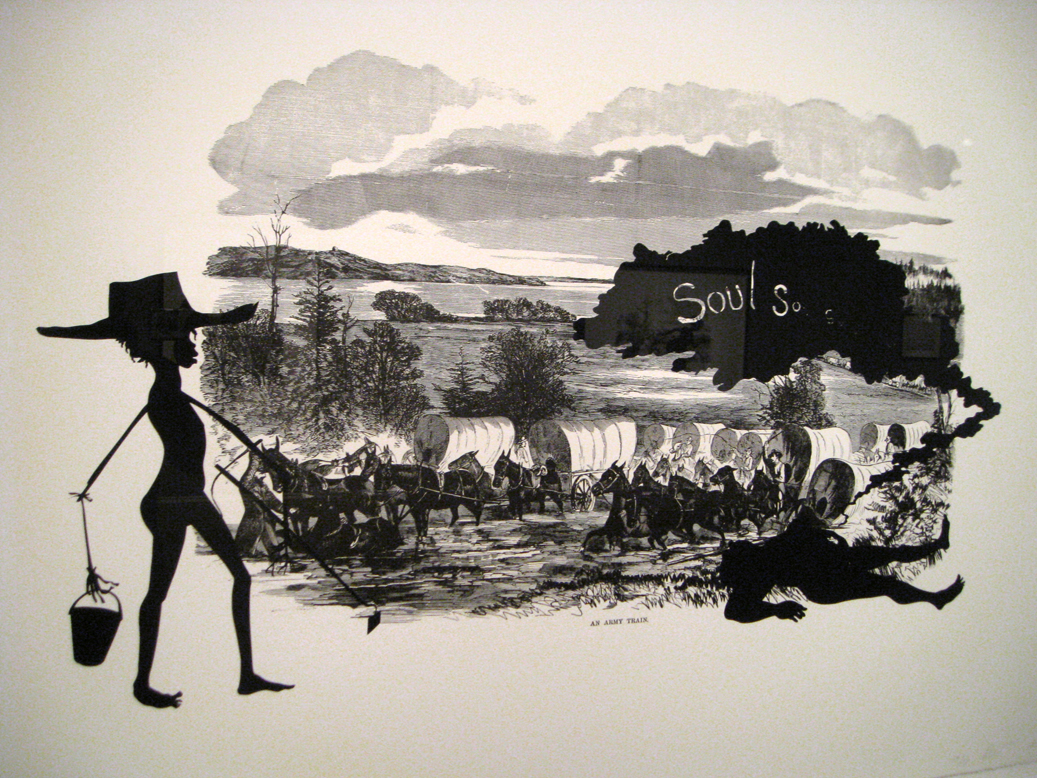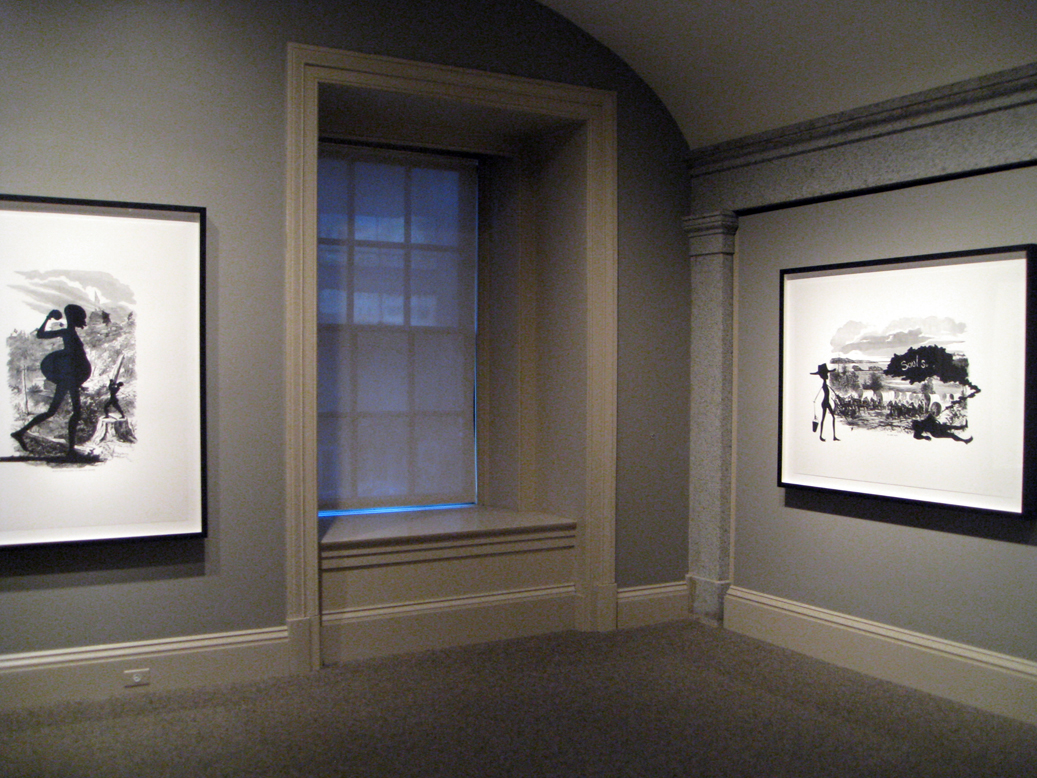WASHINGTON, DC—Kara Walker‘s interpretations of the Civil War, executed in black and white, offer a unique perspective of the war between the states.
Walker has revolutionized the silhouette as an interpretive medium. Her narrative work delves into racial stereotypes, slavery and the American South with bold images that stand in stark contrast to the uptight, classic traditions of the cut-paper form.
Since the mid-1990s the messages and meanings of Walker’s silhouettes have been derided and praised, but few have disputed her aesthetic talents.
A selection of her work interpreting “Harper’s Pictorial History of the Civil War,” a two-volume tome published in 1866, is on display at the Smithsonian’s American Art Museum as part of Multiplicity, an exhibit of contemporary prints from the institution’s collection.
The museum described how Walker created the series by appropriating and enlarging illustrations from the Harper’s volumes: “She chose fifteen wood engravings, enlarged them through offset lithography, and overlaid them with large black stencils. Walker’s signature silhouettes interrupt and transform the nineteenth-century narratives of battle, death, and retreat.”
The exhibit is on view from Nov. 11, 2011 to March 11, 2012.
All photos by Arts Observer

“Signal Station, Summit of Maryland Heights from the portfolio of ‘Harper’s Pictorial History of the Civil War (Annotated)’,” 2005 (offset lithograph and screen print on paper).

“Alabama Loyalists Greeting the Federal Gun Boats from the portfolio of ‘Harper’s Pictorial History of the Civil War (Annotated)’,” 2005 (offset lithograph and screen print on paper).

From left, “Alabama Loyalists Greeting the Federal Gun Boats”; “Pack Mules in the Mountains from the portfolio of ‘Harper’s Pictorial History of the Civil War (Annotated)’,” 2005 (offset lithograph and screen print on paper).

“An Army Train, rom the portfolio of ‘Harper’s Pictorial History of the Civil War (Annotated)’,” 2005 (offset lithograph and screen print on paper).


